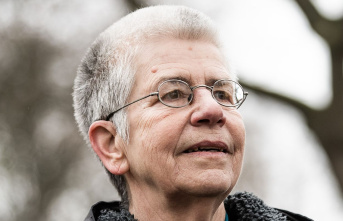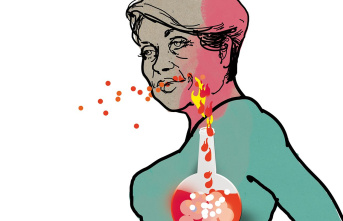Digital technologies are deeply rooted in adolescents and young people, who coexist in a multiple, multimedia and diversified technological ecosystem, dominated by the smartphone – 86.4% of young people between 15 and 29 years of age in Spain have one. This emerges from the report Consume, create, play, from the FAD's Reina Sofía Center on Adolescence and Youth. It also highlights the enormous importance of digital leisure: 79.9% use digital technologies for digital leisure activities every day, with an average of almost seven hours a day.
Youth have been building an intimate and lasting relationship with technology, transferring a large number of practices and experiences to the digital world. In this framework, leisure, as a fundamental value of youth due to its importance in social, educational and psychological development, stands as one of the aspects most affected by digital technologies. In fact, the Internet is a fundamental element in the leisure, individualization and socialization practices of youth.
Virtual social networks account for most of youth's leisure time: 82.8% state that they consume digital content on social networks on a daily basis and 82.4% create their own content that they share on some digital platform –especially Instagram–.
Although it is a phenomenon that affects practically the entire population, it is clear that the need to share one's life on social digital platforms constitutes one of the basic foundations of youth sociability. As the author Paula Sibilia defends, if with the rise of modernity there was a deepening in the development of individuality from the densification of intimacy, in the case of postmodernity we find a need to externalize and share experiences, as if what was lived was not real enough if it is not endorsed and validated by others.
Extensively and constantly, selected snippets of intimacy are shared. This need to show oneself to others constitutes one of the mechanisms for stabilizing one's own identity, for feeling calm that our experiences are not exclusively personal but shared with a community that overwhelms us, which is called extimacy.
The contemporary cultural industry has ensured that today's users are not mere consumers but active prosumers and that the content and information they create constitute the basis on which the digital economy is based.
Thus, in recent decades, platforms and social networks have gone from being environments in which content was shared as entertainment to becoming authentic showcases in which entrepreneurs in the digital society sell the content they generate as merchandise under the auspices of the advertising industry, which has found in influencers the ideal figure to bring its products and services to new market niches.
It is noteworthy that the consumption of audiovisual content constitutes the second most frequent form of youth digital entertainment, only behind the use of social networks, with a huge presence of subscription platforms, which shows the revolutionary penetration that this type of platform has achieved in these generational groups in a short time: 3 out of 4 young people have some paid subscription to digital content.
Therefore, in the pattern of audiovisual consumption of the young generations we can identify a change in what Turner calls «cultures of use», which in the digital age are not so focused on the products themselves, but on subscription services, that allow access to the novelties that are appearing on the market.
Within this digital leisure ecosystem dominated by the content that is uploaded and downloaded on social networks and digital platforms, along with the importance of subscriptions, there is a figure that stands out above the rest: the influencers – youtubers, streamers , creators and creators, etc.–. These are the stars of the internet, famous and recognized people, followed massively, who influence and create opinion.
According to the diagnosis presented in Consuming, creating, playing, practically all young people follow someone who creates digital content –of whatever type–, and 1 in 3 spends money monthly supporting these people –through donations or subscriptions on platforms like Twitch, OnlyFans, donations on Patreon, etc.–.
It is clear how the creation of content is enormously widespread among young people and that the desire to professionalize this activity is enormous. Practically 1 in 3 young people declare that they would like to dedicate themselves professionally to creation and 1 in 10 indicate that they are currently dedicating themselves to it, with significantly higher figures in adolescence.
Not only is there a great desire to dedicate oneself to it, but it appears as an established and socially valued profession among the young population, among whom there is a strong consensus that online platforms are good channels of awareness and social activism, that is a profession with a great future or that these media encourage creativity and freedom to a greater extent than traditional media.
In addition, unlike what can happen in other age groups, among youth there is a generally positive view of content creators, especially among groups under 25 years of age, outlining a certain generational gap within of the young people themselves: 47.1% of young people between 25 and 29 years old consider that most creators make a living from stories, compared to 31.9% of young people between 15 and 24 years old.
This generation gap widens in the case of the adult population. About half of young people consider that the profession of content creator is very little valued socially. These data indicate that adolescents and young people champion the professionalization of content creation, an eminently young profession, both because these generations are the ones who consume the most and because they are the ones who are most dedicated to the creation itself.
This desire and defense of content creation, however, is not a naive youthful dream, but they recognize that dedicating themselves to it is very complicated due to the enormous competitiveness of the sector. They are aware that, despite the gigantic number of young people who try, very few people can succeed. The fact that 7.8% have tried to make a living creating content during the last year (2021) and have given up – 6 percentage points more than in the previous year – exemplifies the great attraction of this profession and gives clues about the frustration and pressure to which those who fail to succeed in an environment in which only a few can stand out are subjected.
More than an unrealistic expectation on the part of young people, it would be more pertinent to speak of a media system that promotes content creation as a future profession, as shown by the large number of articles in the press in which the little chance of real success among those who try.
The model of the content creator fits perfectly with the logic of the self-made self-entrepreneur who triumphs on his individual merits, in a new iteration of the autarkic model of the individual promoted by neoliberal orthodoxy.
Therefore, earning a living as an influencer –or any of its many names– appears in the imagination of young people as a dream that is difficult to achieve, but to which they dedicate a large part of their efforts and energy.
In addition, in a context of uncertainty about the future and high youth unemployment, the possibility of being able to dedicate oneself professionally to a practice that is already inextricably linked with daily life, even if it is mere entertainment, resonates more strongly among young people. However, it is such a small window of opportunity and dependent on so many extrapersonal factors that it can lead to frustration among the vast majority of those who try but cannot succeed.
This article has been published in The Conversation
7












